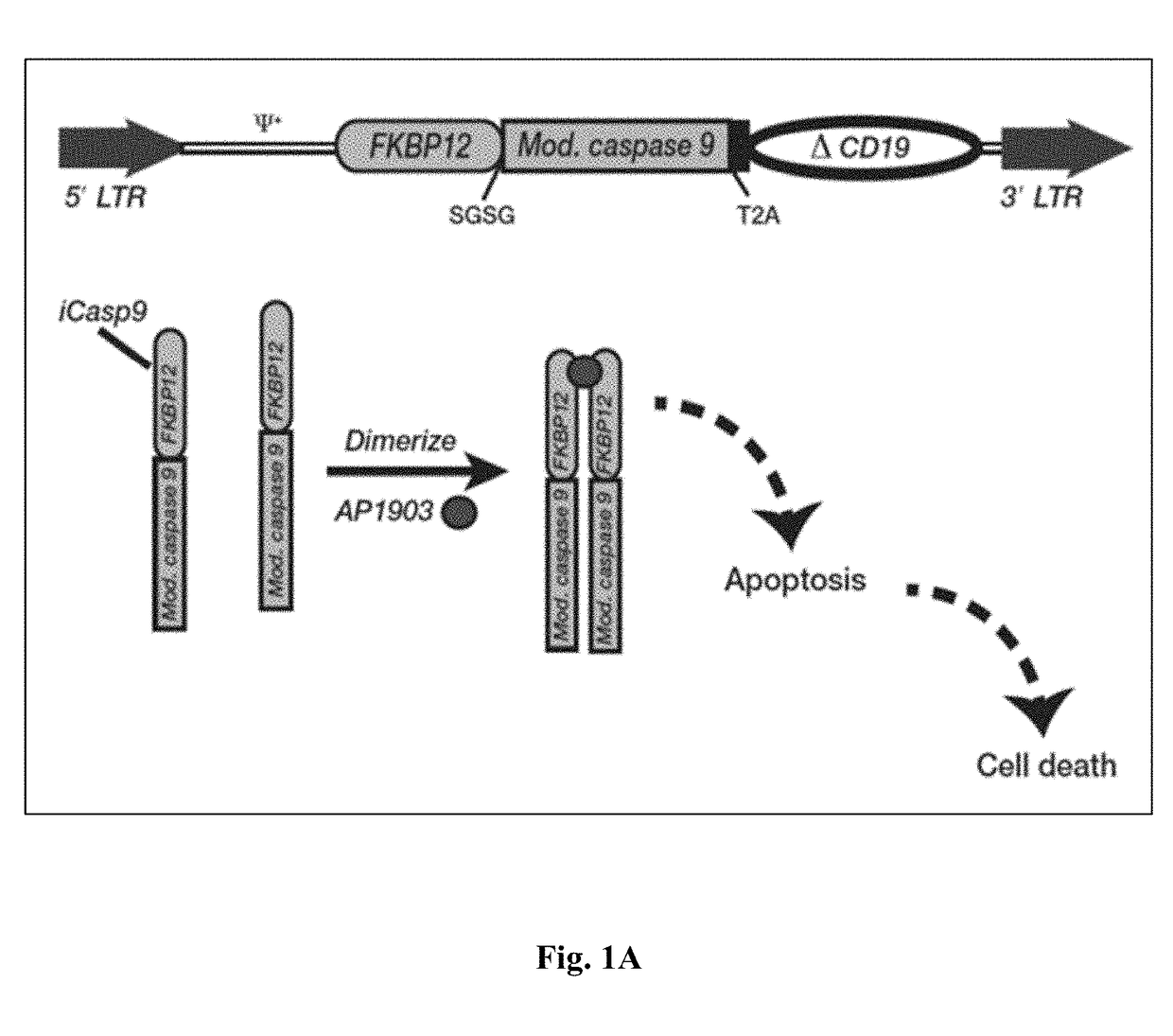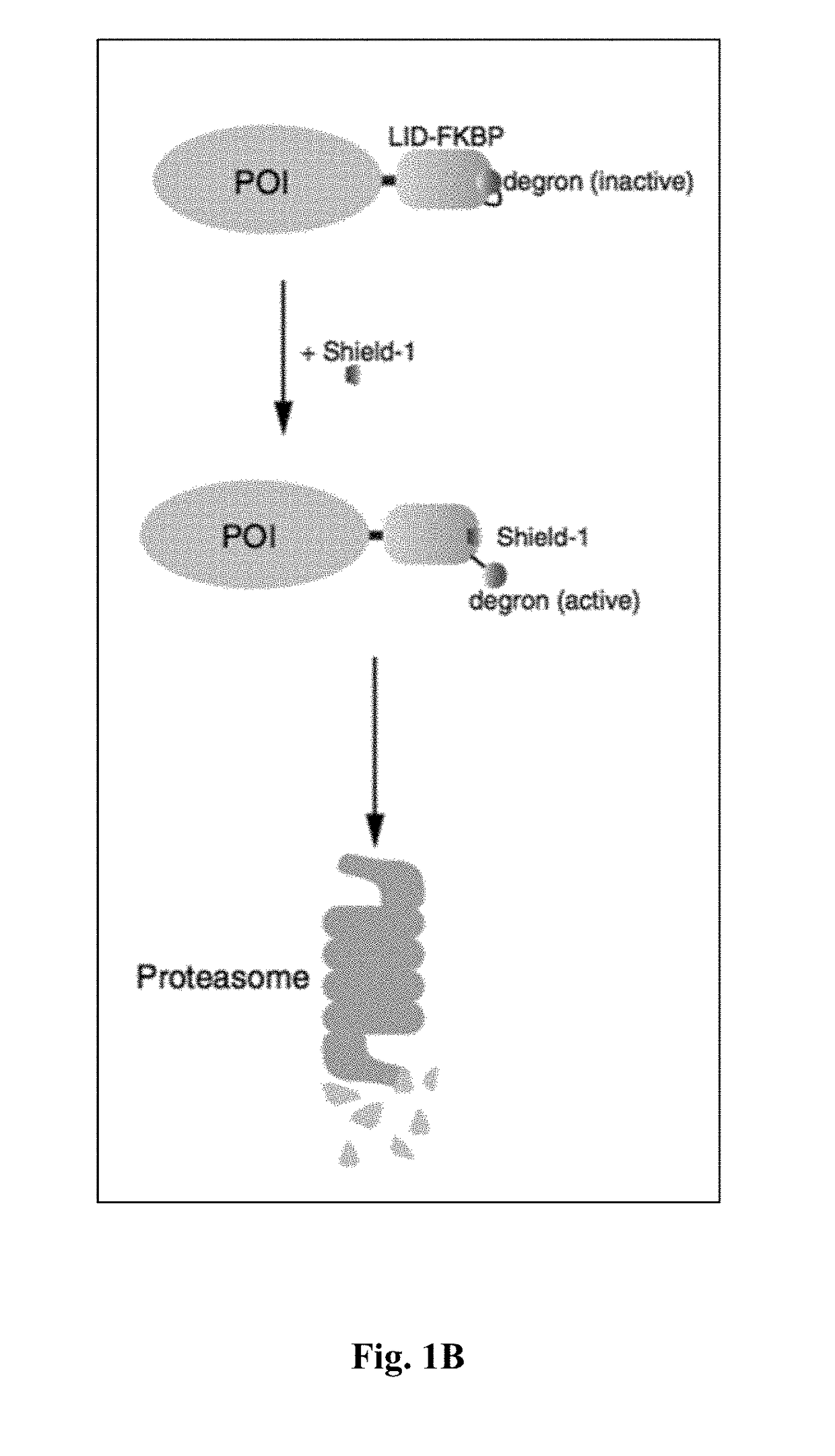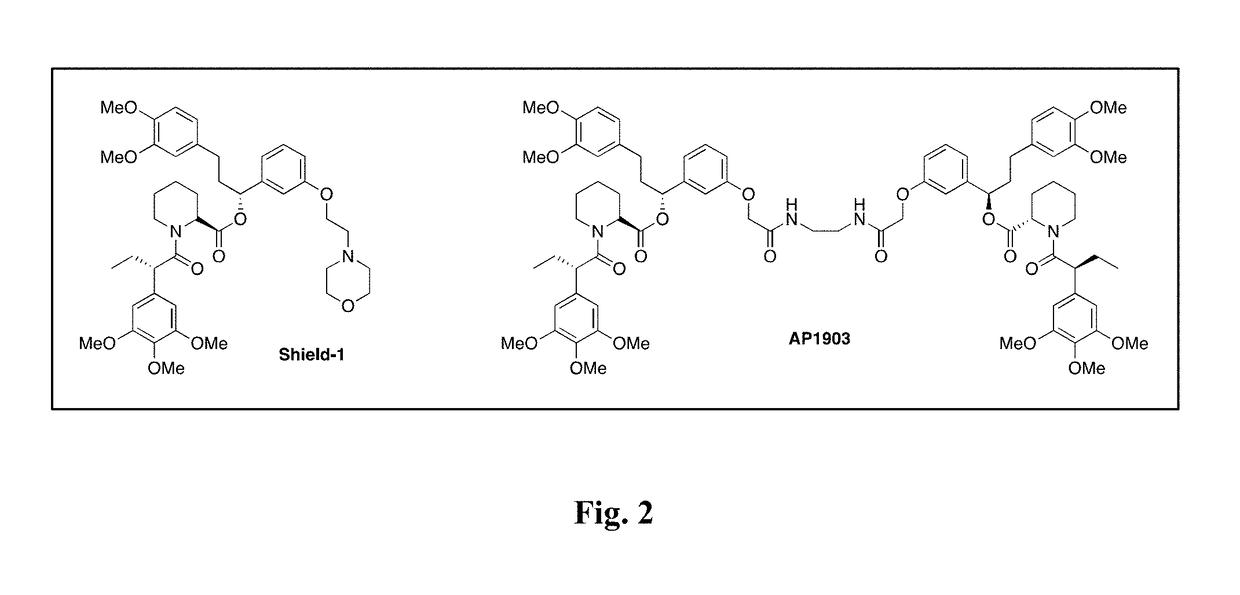Small molecules for dual function positron emission tomography (PET) and cell suicide switches
a positron emission tomography and cell technology, applied in the field of small molecules for dual function positron emission tomography (pet) and cell suicide switches, can solve the problems of inacceptable patients or their physicians, all reporter genes have limitations, and the antitumor effect is difficult to assess the treatment efficacy,
- Summary
- Abstract
- Description
- Claims
- Application Information
AI Technical Summary
Benefits of technology
Problems solved by technology
Method used
Image
Examples
experimental examples
[0279]The invention is further described in detail by reference to the following experimental examples. These examples are provided for purposes of illustration only, and are not intended to be limiting unless otherwise specified. Thus, the invention should in no way be construed as being limited to the following examples, but rather, should be construed to encompass any and all variations which become evident as a result of the teaching provided herein.
[0280]Without further description, it is believed that one of ordinary skill in the art can, using the preceding description and the following illustrative examples, make and utilize the compounds of the present invention and practice the claimed methods. The following working examples therefore, specifically point out the preferred embodiments of the present invention, and are not to be construed as limiting in any way the remainder of the disclosure.
[0281]The materials and methods employed in these experiments are now described.
Shi...
example 1
Novel PET Radiotracers for Imaging CAR T Cells with a Dual Function Report Gene
[0346]A dual function reporter gene that serves as both an imaging agent and a potent suicide gene could find widespread application as a safety switch in cell-based therapies, which would open the door to numerous imaging applications. Since CAR T cell therapy and other gene therapies carry significant risk, which includes cytokine release syndrome, neurological toxicity, on-target / off-tumor toxicity, insertional oncogenesis, graft versus host disease, and off-target antigen recognition, the elegance of a dual function suicide-reporter is key from both a regulatory and patient perspective.
[0347]This invention contemplate the use of the mutant human FK506 binding protein, F36V-FKBP, as a dual function reporter gene, since it has a number of high affinity ligands such as Shield-1 that could serve as novel PET radiotracers, and it has been successfully utilized in humans as a component of the iCasp9 suicide...
example 2
Synthesis and In Vitro Studies with [11C]Shld1
[0353][11C]Shld1 was successfully synthesized, and demonstrated that the novel radiotracer is equivalent to commercially available cold Shld1 (FIGS. 4A-4B, 5A-5B). The Shld1 precursor was synthesized via a modified multi-step route (Amara et al., Proc Natl Acad Sci USA. 1997; 94(20):10618-10623; Yang et al., J Med Chem. 2000; 43(6):1135-1142). Methylation of the precursor with [11C]methyl iodide yielded [11C]Shld1 in 5% radiochemical yield (FIG. 5A) with a specific activity of >533 GBq / μmoL at end of bombardment. Analysis of the radiotracer by HPLC (FIG. 5B) demonstrated co-elution of [11C]Shld1 at the same time as the reference standard; radiochemical purity is >95%. The functionality of the synthesized Shld1 was evaluated using HCT116 cells expressing luciferase fused to the FKBP12 L106P destabilizing domain (L106P-tsLuc). HCT116 cells treated with varying concentrations of synthesized Shld1 induced equivalent protein stabilization whe...
PUM
| Property | Measurement | Unit |
|---|---|---|
| temperature | aaaaa | aaaaa |
| flow rate | aaaaa | aaaaa |
| concentrations | aaaaa | aaaaa |
Abstract
Description
Claims
Application Information
 Login to View More
Login to View More - R&D
- Intellectual Property
- Life Sciences
- Materials
- Tech Scout
- Unparalleled Data Quality
- Higher Quality Content
- 60% Fewer Hallucinations
Browse by: Latest US Patents, China's latest patents, Technical Efficacy Thesaurus, Application Domain, Technology Topic, Popular Technical Reports.
© 2025 PatSnap. All rights reserved.Legal|Privacy policy|Modern Slavery Act Transparency Statement|Sitemap|About US| Contact US: help@patsnap.com



